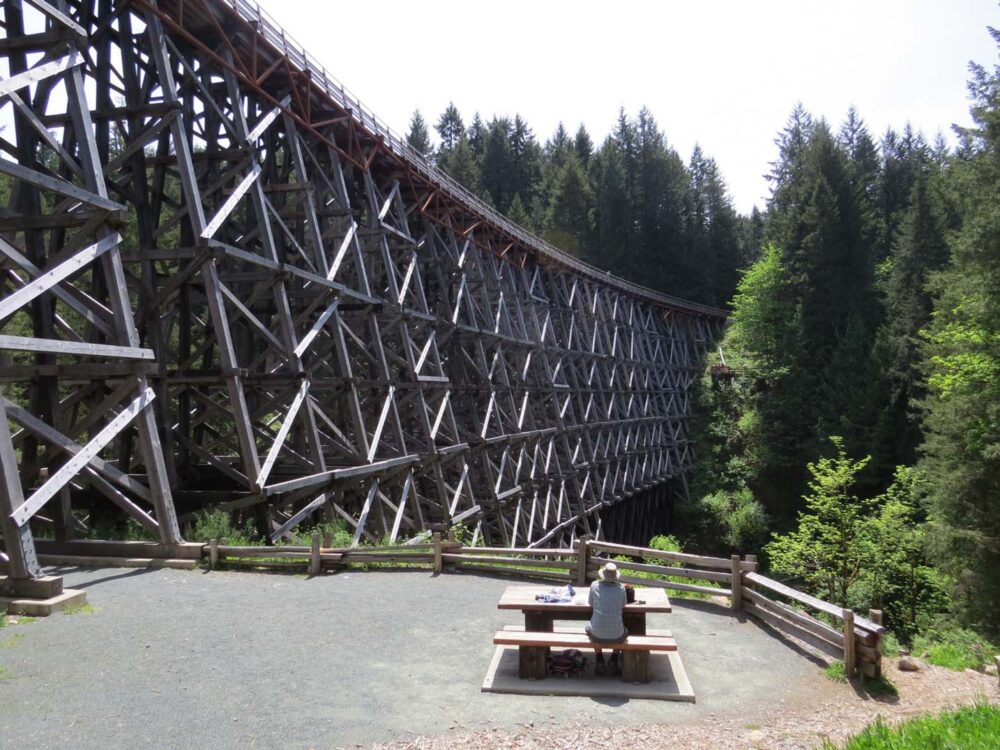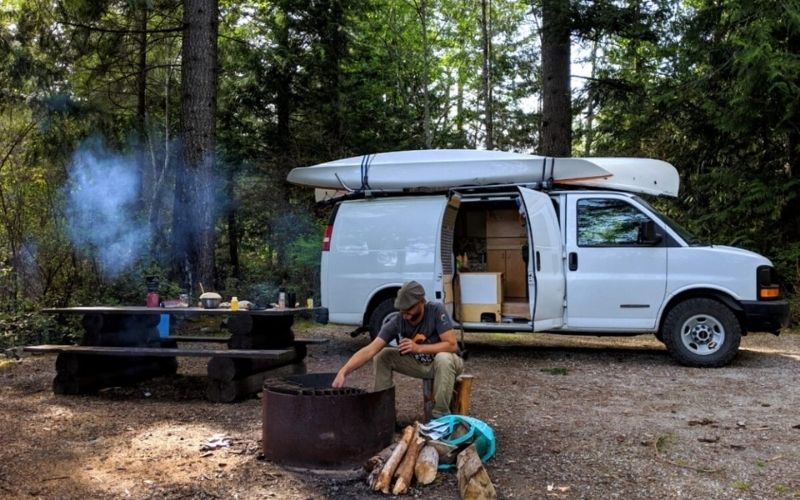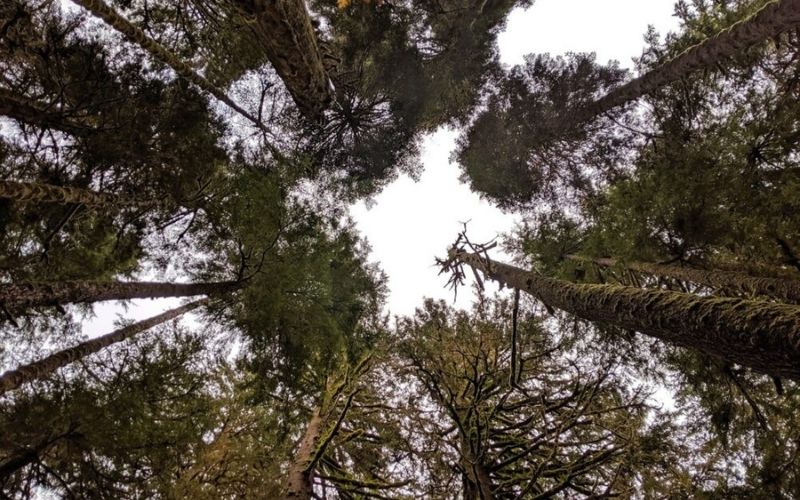Before I came to Vancouver Island I had always thought that Canada’s West coast had a bit of a bland history, at least in terms of ‘settler’ history.
I was a tour guide around Ontario and the Maritimes for over four years and I would always tell visitors that the East was full of history and the West was full of majestic scenery.
After living on Vancouver Island for two and a half years and seeing a lot of the local area, I have realised that this side of the country might be ‘young’ by some interpretations but has much to offer history wise. Unfortunately, most of it is more or less being forgotten.
The ghost town of Bevan
When we first arrived in British Columbia in 2011, we walked around Vancouver (including the oldest part, Gas Town), visited Victoria and the Legislative building, Empress Hotel, Chinatown and the docks.
The obvious history was all there but by chance, we also ended up in a small hostel just outside of Courtenay (around three hours north of Victoria). Here we began our tour of the forgotten history of Vancouver Island.
Lake Trail Guesthouse is located where the coal mining village of Bevan once thrived; there was a hotel, school and a small Chinatown. Now, there are just two properties and three permanent residents.

Forbidden Plateau
Later in our trip, we ended up finding the remains of the old Forbidden Plateau ski resort. Remains of the old lodge and a ski lift is all that’s left of what was at one time a busy ski hill.
Not far away is Cumberland, now a friendly, small town with an alternative side. It was once the home of the second largest Chinatown on the West coast of north America, after San Francisco.
Only a few cemeteries, an old wooden house (lived in until the 1960s) and a great museum are left to remind us of the large and diverse mining community who once lived and worked here.
Railway trestles
One of the most amazing pieces of forgotten history for me was probably the remains of the train trestles. We would be canoeing on a lake somewhere around Vancouver Island and in the middle of nowhere we would notice left over railway tracks. Vancouver Island was once covered in railway lines transporting logs and ore.
Luckily for history and anyone who wants to experience this, the Kinsol Trestle, maybe one of the most amazing ones around, was restored by the Provincial government and is now part of the Trans Canada Trail.

Newcastle Island
Newcastle Island, just off the coast of Nanaimo, was first mined for sandstone before becoming a Canadian Pacific Railway resort in 1931. It had a pavilion (with dance floor), soda foundation, bathhouse and picnic shelters.
Recently, the Island has returned to its Snuneymuxw name, Saysutshun. It’s still possible to visit and enjoy the hiking trails and campground. Check out our dedicated Saysutshun guide.

Cape Scott
History can even be found in the most remote places on Vancouver Island. At the northern tip, Cape Scott Provincial Park also has its own share of history.
Famous for its muddy hikes through the rainforest it’s easy to forget that the trail was first created by two groups of courageous settlers who attempted work the fertile but harsh land around 1890 and 1920.
Foundations of the settler’s houses can be found as well as cooking and building equipment. Near the Lighthouse, the trail follows wooden plank roads, built by the military to reach their secret radar station that was located on the Cape.
For more details and photos, head to our Cape Scott hiking guide.

The Royston ships
I will finish this tour away from the land, and into the ocean. Looking at a map, you will easily find at a glance ship wrecks on most coasts of Vancouver Island.
One of the easiest ways to see some of those wrecks is in Royston, just outside of Courtenay. Several ships were deliberately sunk to build a break water – no tragic story but still interesting to see.

Ripple Rock
Further north, Ripple Rock was an underwater mountain in an area with strong tidal currents. Being only 2.7 metres below the water at low tide, the rock claimed many lives and boats until it was decided it would be better to blow it up.
The explosion was the biggest non-nuclear explosion ever made. And all that from a place I thought had little recent history!
Check out these other posts featuring Vancouver Island next

One half of the Canadian/British couple behind Off Track Travel, Canada. Jean Robert (JR) is up for anything, but you’re most likely to find him either snowboarding, fishing or building something. Gemma and JR are currently based in the beautiful Okanagan Valley, British Columbia, Canada.




Jenna, when I was 8 years old I watched the first cross-Canada live television broadcast. It was the Ripple Rock explosion…twas a big deal. Here’s a link to see it yourself. https://www.youtube.com/watch?v=IVQOvKh3IWY
Hey Rob! We’ve seen that before, it’s pretty awesome. Amazing to think the biggest non-war related nuclear explosion was right here on the West Coast! The currents in that area are still so crazy to look at, so back then it must have been really difficult.
Hi Rob
I’m producing a television series on the history of BC and we’re looking to speak with anyone who remembers watching the Ripple Rock Explosion. I’ve been reaching out to people online for interviews and just information in general. I would love to hear back from you. We could set up a quick chat over the phone if possible.
Thanks,
Jesse
Hi Jesse!
Thanks for your comment. I’m afraid that we cannot help you any further as this article includes all of our own knowledge on the subject. Good luck!
Gemma, when I was 8 years old I watched the first cross-Canada live television broadcast. It was the Ripple Rock explosion…twas a big deal. Here’s a link to see it yourself. https://www.youtube.com/watch?v=IVQOvKh3IWY
Very nice article thanks for writing it…I live in the comox valley, (courtenay,cumberland, comox area) and you are right about the history. I am writing my own blog about it myself. I feel there is so much to see and so much people like you that visit never get to see, like the Look Out. It is a bit of a hike up the mountain side forest in cumberland but the view is crazy. You can see Cumberland, Courtenay parts of comox and even over some mountains to the ocean. Or cathedral grove where the trees are so tall and wide you could have 10 people sit inside its trunks. Or little Qualicum falls, Saratogo beach, and goats on the roof in coombs. There is so much.
Thanks for your comment Robin, I’ll be checking out your blog for sure! There’s so much to see in and around the Comox Valley.